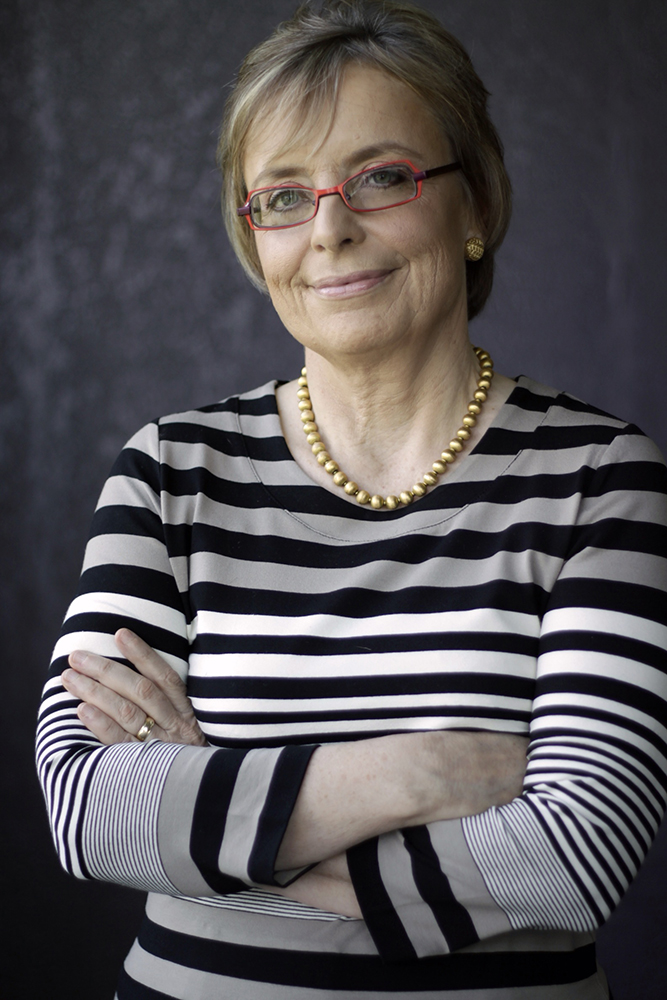My friend, Judith Resnik, a distinguished professor of law at Yale, has spent a lifetime studying justice iconography all over the world. It is her hobby.
I have learned from her that one of the earliest images of Justice with covered eyes is a woodcut from 1494 entitled “The Fool Blindfolding Justice,” an illustration for a book called “The Ship of Fools.” The interpretation of the blindfold is not positive or constructive, but rather a warning against judicial error. The author, Sebastian Brant, who was a lawyer and law professor, equated blindness with sin, ignorance and mistakes.

Judge Cindy Lederman
A similar woodcut, in the city of Bamberg, entitled “The Tribunal of Fools” from the same time period, depicts a presiding justice and four colleagues, all blindfolded and wearing jesters’ caps. The legend on the scroll shown above their heads reads: Out of bad habit these blind fools spend their lives passing judgments contrary to what is right.
From the Renaissance on, in Europe, justices with open eyes were typical, blindfolded justices were in the minority.
Those of us who work in the juvenile court have a blind and fervent belief that the services we send our families to — substance abuse, therapeutic services, domestic violence, parenting education — WORK!
For more information on Evidence-Based Practices, go to JJIE Resource Hub | Evidence-Based Practices
The reality is we have no idea in most cases. It is more likely from research studies that the services have no effect whatsoever and in some cases the service can actually be harmful to the population they are designed to help.
I used to believe that every day I was helping the people in my courtroom by sending them to programs, chosen by the child welfare system. It never even occurred to me that I could be harming them.
Scales fall from eyes
I was firmly disabused of this notion, thankfully, early in my career.
It happened In 1994 when I received a gift that changed my professional life forever. A call from the National Research Council at the National Academy of Sciences asking me to serve on an NRC committee studying family violence Interventions.
The NRC is the largest operating arm of the National Academy of Sciences, an organization created by the U.S. Congress during Abraham Lincoln’s presidency to advise the government on scientific matters. I accepted the invitation and arrived in Washington for the first meeting confident that all the programs and services I sent families to every day actually helped them. I was introduced to a fascinating new world: a world of research and evaluation and science, a world I have never left.
I learned that most of the services we offer to our families do not help them. I learned about the null hypothesis and iatrogenic effects, concepts that I found fascinating and frightening at the same time. It had never occurred to me that so much of the work we do in the world of jurisprudence could be without value or even harmful. I began to question my own decisions every day.
I began to wonder if we are abusing our power as blind constitutional officers not asking questions about the quality of the services we require. And I began to worry that I had caused the children and families I see more harm than good. I began to ponder seriously how science and the law can intersect to inform judging and the practice of law. In juvenile court, the court itself must be a therapeutic intervention.
As a result of these experiences, I came to understand the absolute necessity of integrating research and evaluation into court policies and practice. The need to search for and implement evidence-based programs.
We need the science from decades of child development research informing our decision-making and transforming the court as a platform for interrupting the intergenerational cycle of abuse and neglect with effective intervention.
We need to demand evidence-based services for our families. Services that have been subjected to randomized clinical trials resulting in peer-reviewed publications. Services that we know can be effective when implemented with fidelity to the designated population.
We must begin to ask over and over: How do we know it works?
Judge Cindy S. Lederman has served in the Miami-Dade Juvenile Court since 1994, was a member of the Board of Trustees of the National Council of Juvenile and Family Court Judges and former president of the National Association of Women Judges. She was named Judge of the Year by National CASA in 2014, was the recipient of the 2018 Janet Reno Endowment Women’s Leadership Award from the Georgetown University McCourt School of Public Policy and her 2011 book is entitled “Child-Centered Practices for the Court and Community.”

Pingback: Friday News Roundup: September 14, 2018 | Justice Programs Office